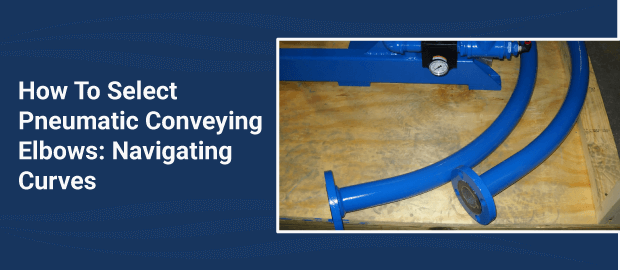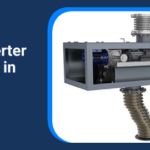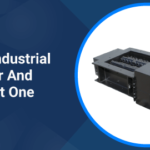If you are new to the world of pneumatic conveying, you must know that it is a system that comprises various pipelines, ideal for moving products with the use of compressed air. Among all other components used in streamlining the function of a pneumatic system, an elbow is among the most crucial ones.
Elbows hold a very special importance in the functionalities of pneumatic conveying systems and their performance quotient. Irrespective of whether the system is set to function in a dilute or dense phase or whether in a vacuum or under pressure, an elbow is accountable for making the changes in the direction of material flow.
This article will help you get a better clarity into what an elbow in a pneumatic system is and how you can choose one.
Reach Tight corners with elbow tubes and make pneumatic conveying more efficient.
A] What Is An Elbow In A Pneumatic System?
If you are aware of the basics associated with pneumatic systems, understanding pipe elbow won’t be a complex job. As per the experts, an elbow within the pneumatic system is better known as an angled piece of tube that’s designed and manufactured under very strict guidelines.
In the operational arena, the pneumatic conveying elbows are categorised into short and long-radius variants with varying curvature points. The short radius (SR) elbow has a curvature ratio of 1.0D, whereas the long radius (LR) elbow has 1.5D. Hence, this measurement indicates that the materials being conveyed through the pneumatic system using LR elbows will project a smoother flow than that of the SR elbows.
Among the two variants of elbows for pneumatic systems, the LR elbow is utilised the most, as it can be used in diverse ways and does not trigger much pressure reduction. SR pneumatic elbow fitting, on the other hand, is adequate for confined areas.
B] Types Of Elbows For Pneumatic System
As far as pneumatic systems are concerned, there are a lot of different types of elbows out there for improving the functionalities associated with conveying materials. But, the most noteworthy ones that are currently in practice include:
1. Short Radius Elbow
As stated earlier, the short radius elbows come with a 1.0D curvature ratio and a centerline radius 6x more than that of the outside diameter. The reason these elbows are being used on priority is its affordability and easy installation capability.
But, for some applications or pneumatic conveying requirements, the SR elbow might not be the right pick. That’s because it comes with a very critical impact angle, which makes it more prone to damage at a single spot, which will increase the chances of elbow pneumatic failure.
Therefore, it is advised that the short elbows should only be used for low-abrasion products to avoid productivity or monetary losses by repelling the need for constant replacements.
2. Long radius elbows
Long radius elbow, the bigger version of the SR counterpart, comes with an even bigger centerline radius, >7x than that of the outer diameter. It implies that the LR elbows will take up a larger space but will be able to add great benefits to the system’s functionality.
The impact angle on the LR elbows will be shallower, which will cause the product to drag along the elbow’s back instead of bouncing off the surface. Thus, the overall impact gets reduced, and the wear spreads out evenly. As a result, both products are pneumatically conveyed, and the elbows are safe from being overly degraded, even while dealing with abrasive materials.
But such convenience doesn’t make LR elbows the right choice in all scenarios. In a setup, when you tend to use materials that tend to smear, such as polyethylene pellets, the drag times increase. Due to this, the degradation quotient of the product increases.
3. Impact elbows
The third category of elbows, impact style options, is a short-fitting counterpart, ideal for repelling abrasion damages due to mechanical operations. Vortex or dead-end tee elbows are a couple of options under the impact elbow category that are ideal for minimising product degradation and component abrasion.
However, the dead-end tee option is mostly used for its additional perks of being affordable and easily available. Both of these options are not ideal if you are conveying sticky, cohesive, and moist products because they can trigger some form of blockage.
This quality of elbows is ideal for being used with abrasive materials. Moreover, you must also be cautious before changing your radius elbows with that of the impact elbows to ensure no system malfunction takes place. Find the best pneumatic conveying system manufacturer to help you make a choice!
C] Considerations For Pneumatic Conveying Elbows
Once you are done battling with respect to long-radius elbow vs short-radius elbow and have chosen the one you need, here are some of the other considerations that you must make before buying your pneumatic conveying elbows:
1. Tonnage per Hour
Depending on your increasing rate of pneumatic conveyance of materials in the system, the wear & tear quotient will also increase. When you have a pneumatic elbow connector that can bear high tonnage every hour, you will get a stronger component that can withstand much wear & tear and last longer.
2. Operating Pressure
The pressure within the pipes is meant to affect the speed and tonnage of your product that’s being conveyed. When you are aware of the pressure, you will be able to predict the behaviour of the material along with the wear patterns within the pipes. This way, you will be able to choose a pneumatic-fitting elbow that will suit all your predicted risks.
3. Size of the Particle
The impact force is directly proportional to that of the particle size. It means that if you are transporting larger particles, you must expect greater wear & tear on the elbows. Therefore, your choice of elbow should depend on the size of the particles you convey.
D] Common Problems With Elbows And How To Spot Them
Even after ending the debate on using long radius elbow vs short radius elbow, here are some of the common issues associated with the use of elbows and the right way to spot them:
- Impact Wear
It is among the most common issues that the elbows encounter, and it occurs because of the full force with which the materials come in contact with the elbow surfaces for changing direction.
To spot it, look for small impact holes right next to the tangential line at the back of the elbow where the material tends to hit.
- Corrosion
Corrosion tends to occur when the material you tend to convey is corrosive. And that’s because such materials will slowly deteriorate the elbow over time.
To spot it, you must look for any discolouration or rusting effects on the elbow, which will indicate that corrosion has occurred.
- Abrasion
It is a problem that occurs if the materials being conveyed start rubbing against the elbow, resulting in wearing out the line components over time.
Reach Tight corners with elbow tubes and make pneumatic conveying more efficient.
Conclusion
With this, you are now aware of what it takes to buy the best pneumatic conveying elbows for the system’s functions. If you aren’t emphasising choosing the right type of elbow for the system, you will eventually end up paying multiple times, seeking its replacement.
Over time, technological changes have been noticed immensely in improving the pneumatic system’s functions. In the future, the rate of energy consumed will be reduced, and pneumatic systems will encourage sustainability.
However, the need for the right elbow for a seamless operation will continue to persist. If you are looking for the best components to add to your system, Macawber Engineering Systems India Pvt. Ltd. is here to help you with the best elbows and other pneumatic conveying components. Contact us to know more!



